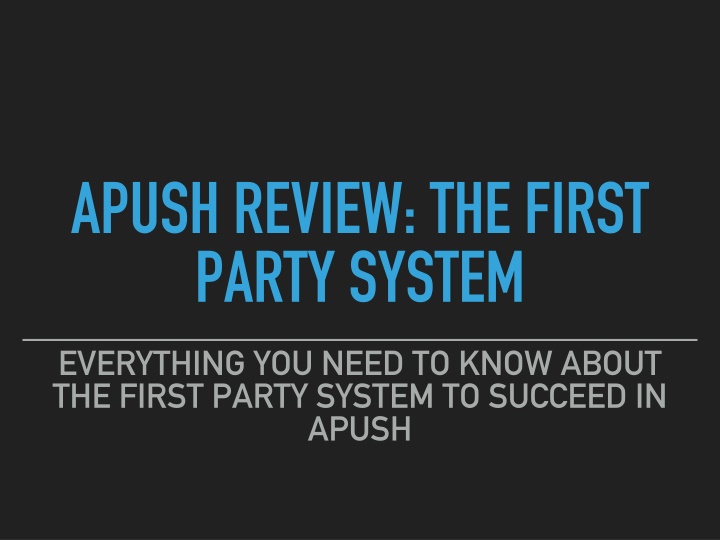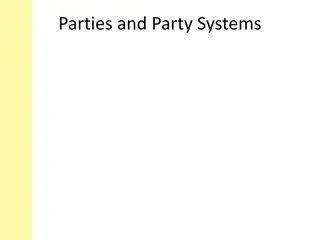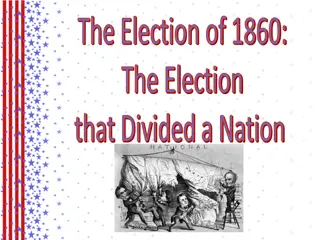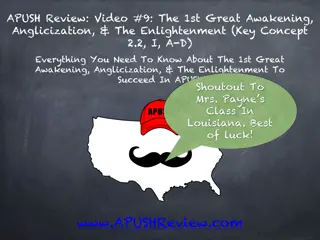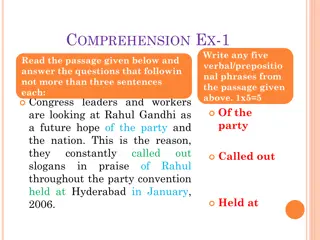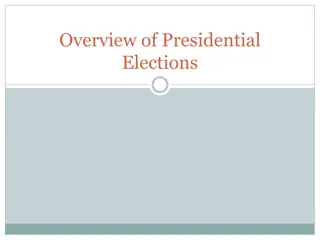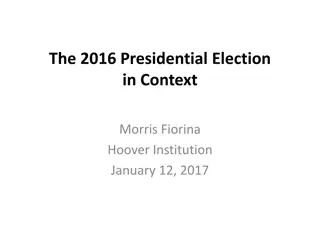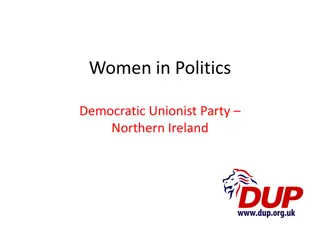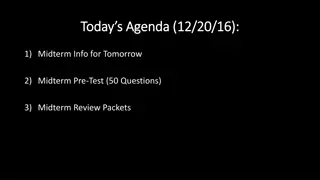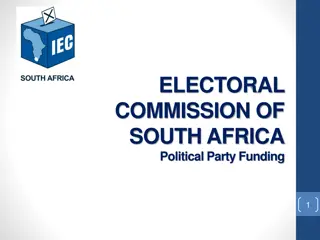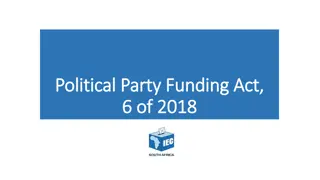Examining the First Party System in APUSH
Explore the political landscape of the 1790s with the formation of the first party system in APUSH. Discover the key positions on federal vs. state power, economic and foreign policies, and the delicate balance between liberty and order that gave rise to Federalists and Democratic-Republicans. Unfold the reasons behind the parties' development and their stances on critical issues like the power of the federal government, foreign policy, economic plans, and challenges to individual freedoms.
Download Presentation

Please find below an Image/Link to download the presentation.
The content on the website is provided AS IS for your information and personal use only. It may not be sold, licensed, or shared on other websites without obtaining consent from the author.If you encounter any issues during the download, it is possible that the publisher has removed the file from their server.
You are allowed to download the files provided on this website for personal or commercial use, subject to the condition that they are used lawfully. All files are the property of their respective owners.
The content on the website is provided AS IS for your information and personal use only. It may not be sold, licensed, or shared on other websites without obtaining consent from the author.
E N D
Presentation Transcript
APUSH REVIEW: THE FIRST PARTY SYSTEM EVERYTHING YOU NEED TO KNOW ABOUT THE FIRST PARTY SYSTEM TO SUCCEED IN APUSH
WHAT THE CURRICULUM STATES.. Key Concept 3.2, III, B: Political leaders in the 1790s took a variety of positions on issues such as the relationship between the national government and the states, economic policy, foreign policy, and the balance between liberty and order. This led to the formation of political parties - most significantly the Federalists, led by Alexander Hamilton, and the Democratic-Republican Party, led by Thomas Jefferson and James Madison.
SO. WHY DID THEY DEVELOP? 4 Main Reasons: Power of the Federal Government Foreign Policy (Stemming from the French Revolution) Economic Policy (Stemming from Hamilton s Financial Plan) Balance between liberty and order (Stemming from Alien and Sedition Acts)
POWER OF THE FEDERAL GOVERNMENT Federalists favored a stronger national (federal, central) government Democratic-Republicans favored a smaller federal government Madison and Jefferson argued that states should be able to nullify federal laws VA and KY Resolutions
FOREIGN POLICY Democratic-Republicans tended to support France France provided aid during Rev. War Declaration of Independence inspired the French Rev. Federalists wanted to have a beneficial relationship with England Major trading partner Jay s Treaty (1794) When France and England went to war in 1790s, Dem-Reps wanted to support France, Federalists wanted to remain neutral Washington s Neutrality Proclamation
ECONOMIC POLICY Hamilton s Financial Plan pitted Hamilton against Jefferson and Madison Bank of the US (BUS) was the most controversial aspect Strict (Democratic-Republicans) vs. Loose (Federalists) Interpretation of the Constitution Ultimately, Washington supports the BUS and sides with the Federalists
BALANCE BETWEEN LIBERTY AND ORDER Alien and Sedition Acts (1798, Adams Administration) Meant to silence Adams Democratic- Republican opponents YOU WILL NOT SILENCE ME! Punishments for criticizing included fines and/or jail time Jefferson (Adams VP) and Madison responded with the VA and KY Resolutions Urged states to nullify the Alien and Sedition Acts
CHECK OUT THE HAMILTON SOUNDTRACK. Cabinet Battle #1 (Bank and Financial Plan) Cabinet Battle #2 (Conflict between France and England) One Last Time(Washington s Farewell Address) Every other song because they re amazing
A SHORT ANSWER QUESTION. A. Briefly explain how ONE of the following was most significant in the formation of political parties in the late-18th century: Relationship between the national government and the states Economic policy Foreign policy B. Provide ONE piece of historical evidence that supports your choice in part a. C. Briefly explain why one of the other options is not as significant in the formation of political parties in the late 18th century.
AN ESSAY TOPIC.. Explain the reasons for the formation of political parties in the late 18th century. (Causation)
THANKS FOR WATCHING! Best of luck in May!
